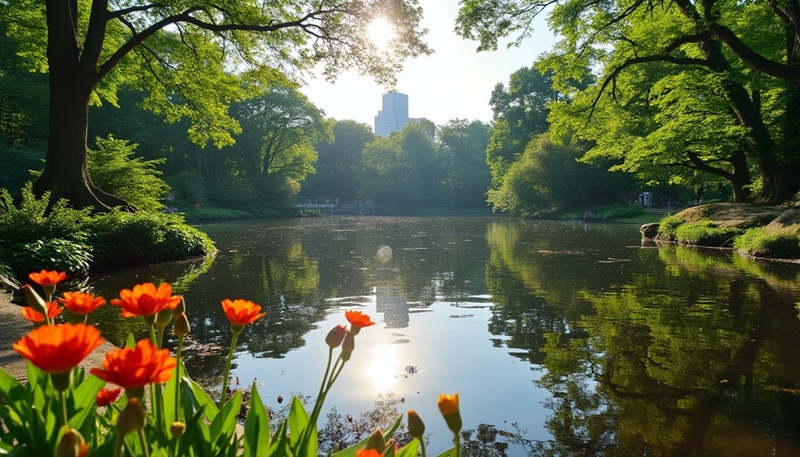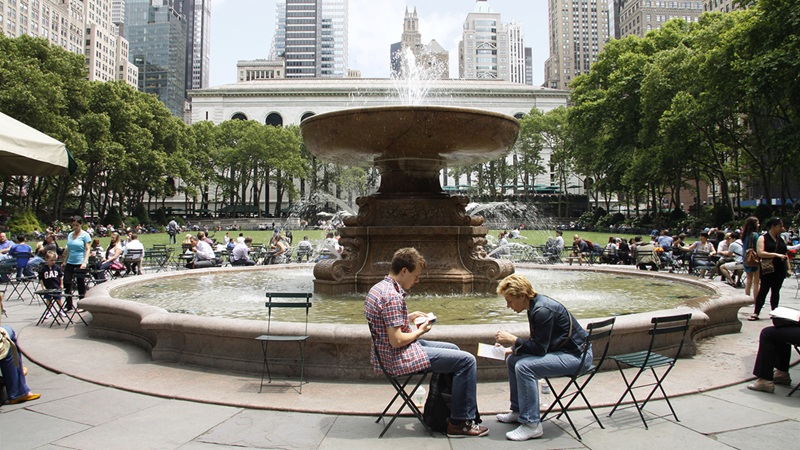
The Hudson River Greenway is one of New York City’s most cherished outdoor spaces, offering a blend of urban vibrancy and natural tranquility. Stretching along Manhattan’s western edge, this linear park serves as both a recreational hub and a vital transportation corridor for pedestrians and cyclists.
Overview and Features
The Hudson River Greenway spans over 13 miles, from Battery Park in the south to the George Washington Bridge in the north. It is part of the larger Manhattan Waterfront Greenway and provides breathtaking views of the Hudson River while connecting a series of parks, piers, and cultural landmarks.
- Recreational Pathway: The Greenway features a dedicated, traffic-free path for runners, walkers, and cyclists, making it a popular choice for fitness enthusiasts and commuters alike.
- Parks and Open Spaces: Along the route, you’ll find several parks, including Riverside Park, Hudson River Park, and Fort Washington Park, offering spaces for relaxation, picnics, and recreational activities.
- Public Art and Landmarks: The Greenway showcases a variety of sculptures, murals, and installations, alongside landmarks like the Intrepid Sea, Air & Space Museum and the Little Red Lighthouse.
- Piers and Waterfront Access: Many piers along the Greenway have been transformed into recreational spaces with amenities like sports fields, playgrounds, restaurants, and boat launches.
History
The Greenway is a testament to New York City’s efforts to reclaim its waterfront for public use. In the late 20th century, much of Manhattan’s waterfront was industrial and inaccessible. The transformation began in the 1980s, with the development of Hudson River Park and other initiatives that prioritized green spaces and sustainable infrastructure.
By the early 2000s, the Hudson River Greenway had emerged as a cohesive pathway, part of the city’s vision for a continuous green belt encircling Manhattan.
Activities and Highlights
Whether you’re a local or a visitor, the Greenway offers something for everyone:
- Cycling and Jogging: The uninterrupted path is perfect for cycling and jogging. Rentals and bike-sharing services like Citi Bike are available nearby.
- Picnicking and Relaxation: Bring a blanket and relax in one of the many parks along the way.
- Water Activities: Kayaking and paddleboarding are popular at designated points, such as Pier 96 and Pier 84.
- Events and Festivals: The Greenway often hosts events like outdoor concerts, fitness classes, and seasonal celebrations.
Practical Information
- Accessibility: The Greenway is free to use and open year-round. It’s wheelchair accessible with numerous entry points.
- Best Times to Visit: Early mornings and evenings are ideal for a serene experience, especially during spring and fall when the weather is pleasant.
- Safety Tips: Be mindful of cyclists and runners on the shared pathway. Stay hydrated and use sunscreen during sunny days.
Environmental and Urban Impact
The Hudson River Greenway has significantly contributed to New York City’s sustainability and quality of life. It encourages eco-friendly transportation, reduces carbon emissions, and provides a natural respite in the bustling city. The Greenway also plays a role in stormwater management and habitat preservation along the waterfront.
Conclusion
The Hudson River Greenway is more than just a pathway; it’s a celebration of New York’s commitment to creating vibrant, sustainable, and inclusive public spaces. Whether you’re seeking exercise, leisure, or a scenic route through Manhattan, the Greenway offers an unparalleled experience that showcases the best of urban and natural beauty.

